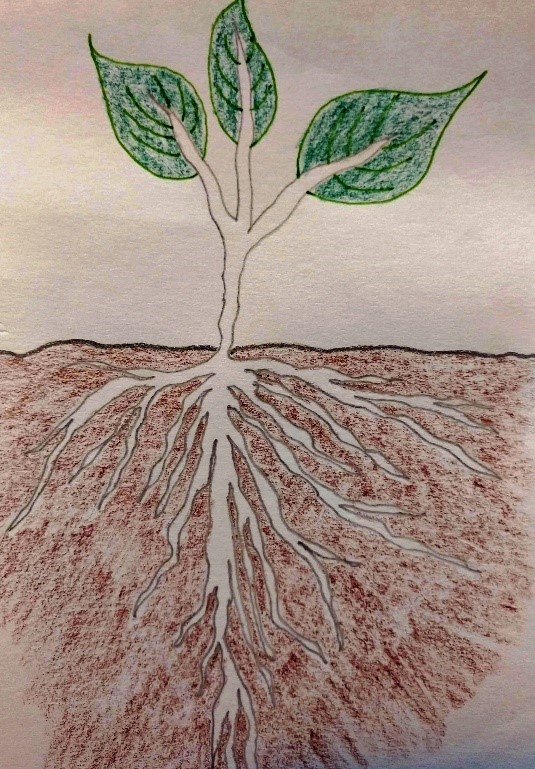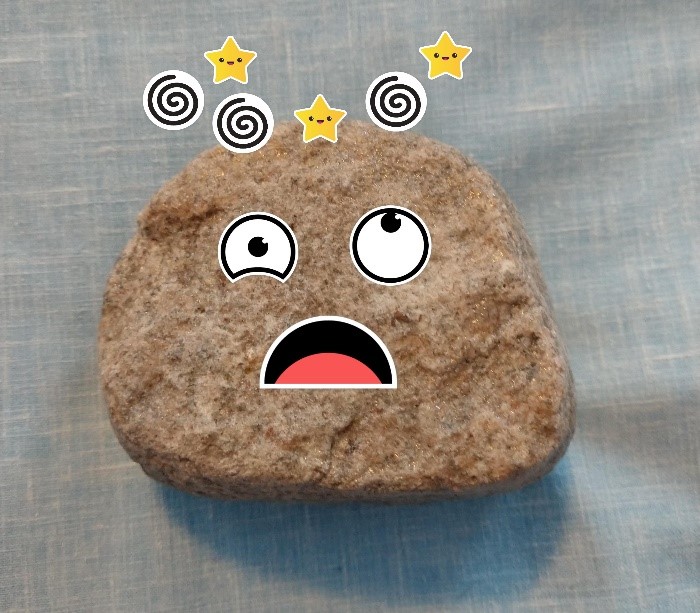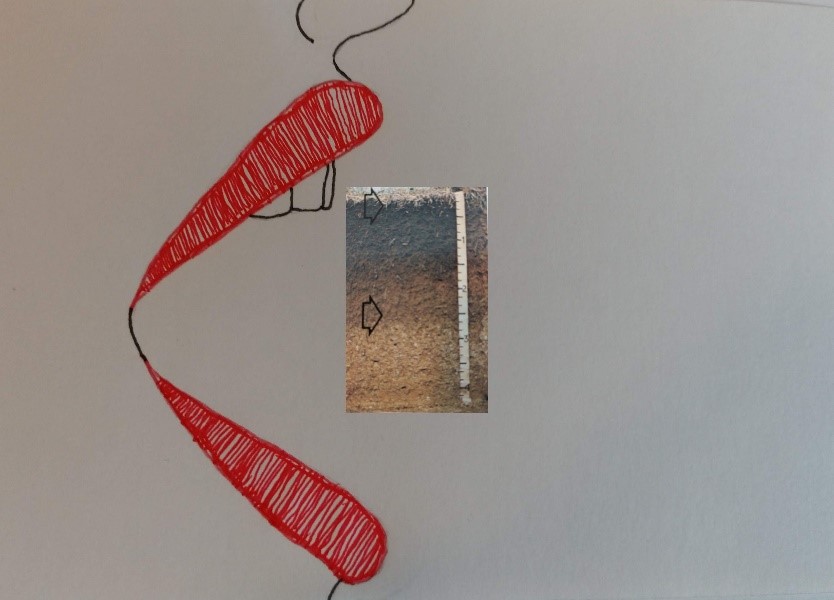Do you really understand what is under your feet… and what it took to get it there?
When I was young, I didn’t ponder on the purpose of that dark stuff under the grass. It was something that got stuck under my fingernails and was fun to dig up and find bugs in. It was everywhere—even in the house, if you didn’t wipe your feet.
So when I opened my textbook on my first day of Soil Science 101, I was nervous. I knew that there was more to soil than a block of dark matter that held roots and water. I barely knew anything about farming, much less the intricate details of the teeming ecosystem underneath the crops I was learning about.
But you know what? The book actually had some familiar words! Soil really isn’t that different from you or I in some regards, believe it or not.
In my first blog, we established that soil is NOT dirt, and that dirt is soil where you don’t want it.
But what is soil?
Soil is the natural medium for the growth of land plants.

Therefore, not all of earth’s land surface is covered with soil. If it can’t grow plants, it isn’t soil. What isn’t soil? Polar ice, high elevation areas, hardened lava, salt flats, and bare rock mountain slopes. If an area has anything that would make a plant recoil its little roots and say “Nope, not going there”—that is not soil.
Sounds simple, right? Well, enter NASA and explorers asking about mineral substrates on other planets. Have you read or seen “The Martian”? Is that soil? It isn’t on earth….is oxygen required to make something soil? I’m not going down that path—that’s for another day and another argument.
Where did soil come from?
Well, where did YOU come from? Your parents, right? Soil has a parent, too—the substance from which the soil was made is called its parent material. Most soils came from minerals and rocks. Parent materials go through chemical and physical processes called weathering over many, many years to create loosened material. In this case, weathering doesn’t mean a soil is checking the radar or the forecasted high temperature. It means a rock is being worn down into something useful to a plant. So your mom isn’t the only one who is worn down. And mom? Next time you’re frazzled, you can say you are being weathered! Ha!

Why aren’t all soils the same?
You may have noticed that not all soils look alike. Some are deep, almost black, crumbly, and grow just about anything. Others are light tan, grainy, and seem to blow around too much. Some soils are red, some salty, some deep, some barely there. How a soil forms depends on these factors:
- Parent Material: You aren’t the only one who inherited things from your parents! Properties such as rates of weathering, nutrient composition, and particle size depend on the substances that the soil came from.
- Climate: Precipitation and temperature are the main things in a climate that affect how a soil develops.
- Biota: This is a fancy word for living things and their waste, including dead parts and poop of plants and animals of all sizes—even the ones you can’t see.
- Topography: This is how the earth’s surface is shaped. A soil will be affected by how level or sloped the land is, elevation, and even what direction the soil is facing on the slope (does it see lots of sunshine, or is it hidden from the light and heat?).
- Time: A soil can take 200 to thousands of years to develop.
What does a plant need from soil?
So if soil is a medium or substance that can grow plants, what is needed in order to call it soil? Soil provides the following growth factors to plants:
- Support: No, not positive affirmations, or tight pantyhose. Plants need help standing up, and soil provides support as the roots grow into the substrate.
- Oxygen: It’s often misunderstood that a plant only gives off oxygen. It is true that oxygen is a product of photosynthesis, but a plant also needs to breathe, and oxygen is required for this. Roots need oxygen in the soil. Little tiny spaces between the loosened parent material hold air that contains oxygen.
- Water: Part of those tiny spaces between soil particles hold water, too, and the roots absorb the water as they need it.
- Proper temperatures: The roots can’t freeze or fry. Temperature requirements depend on the species.
- Nutrients: Plants require 16 nutrients, 13 of which are supplied by the soil, either by sticking to the soil particles themselves or being dissolved in the water in the pores.
A soil has layers?
Nope. And yes. But read on.
First, you have the weathering, or creation of small particles. Then, you have soil development. These two put together are called soil formation. It doesn’t all happen at once. If you dig a deep hole, from the top all the way down to the parent material at the bottom, you would see what looks like layers of soil. But they aren’t layers.
Layers are for cakes.

Don’t eat it. It’s not a cake.
These areas of variation are called horizons. The horizon with the least amount of formation will be at the bottom, and the most developed horizon that will grow the best plants will be at the top.
What kind of horizons are present depends on where you are. Most soils in my area, the midwestern United States, have an A horizon (the topsoil, where you would find the roots and the most critters crawling around and where a farmer would till and plant crops), a B horizon (a little less developed than the A horizon), and a C horizon (resembles the parent material, but has started to break down). There are many versions, amendments, subgroups, and additions to this basic idea.
I can friend a soil on Facebook?
Ha. Caught you there. You know when you see someone that is particularly good looking from the side, and think, “nice profile”? Well, a soil has a profile, too. Does that mean it can fill out information on Instagram and post silly photos and quips?
“The earthworms are tickling me particularly vigorously this morning”
“This rain is really bringing me to field capacity”
I heard you groan.
We were just talking about the soil’s profile earlier and you didn’t even know it. Remember that hole you dug from the top of the soil all the way down to the parent material so you could look at the horizons? The collection of horizons is the soil’s profile. A soil profile is a vertical section of the soil through all its horizons and extending into the parent material.
Now that you’ve become a little more familiar with soil, I hope it makes you feel more grounded. (You’re supposed to laugh here).
And I hope since you learned that soil has a parent that it has worn down just like you, you’ll feel a little closer to it. So the next time you see its profile exposed, you can tell it, “Gee, I like you’re A horizon”. (Ahem….laugh again, please).
Thanks for reading!
Reference: Soils in Our Environment by Raymond W. Miller & Roy L. Donahue. 1995. Prentice-Hall, Inc. Englewood Cliffs, NJ
